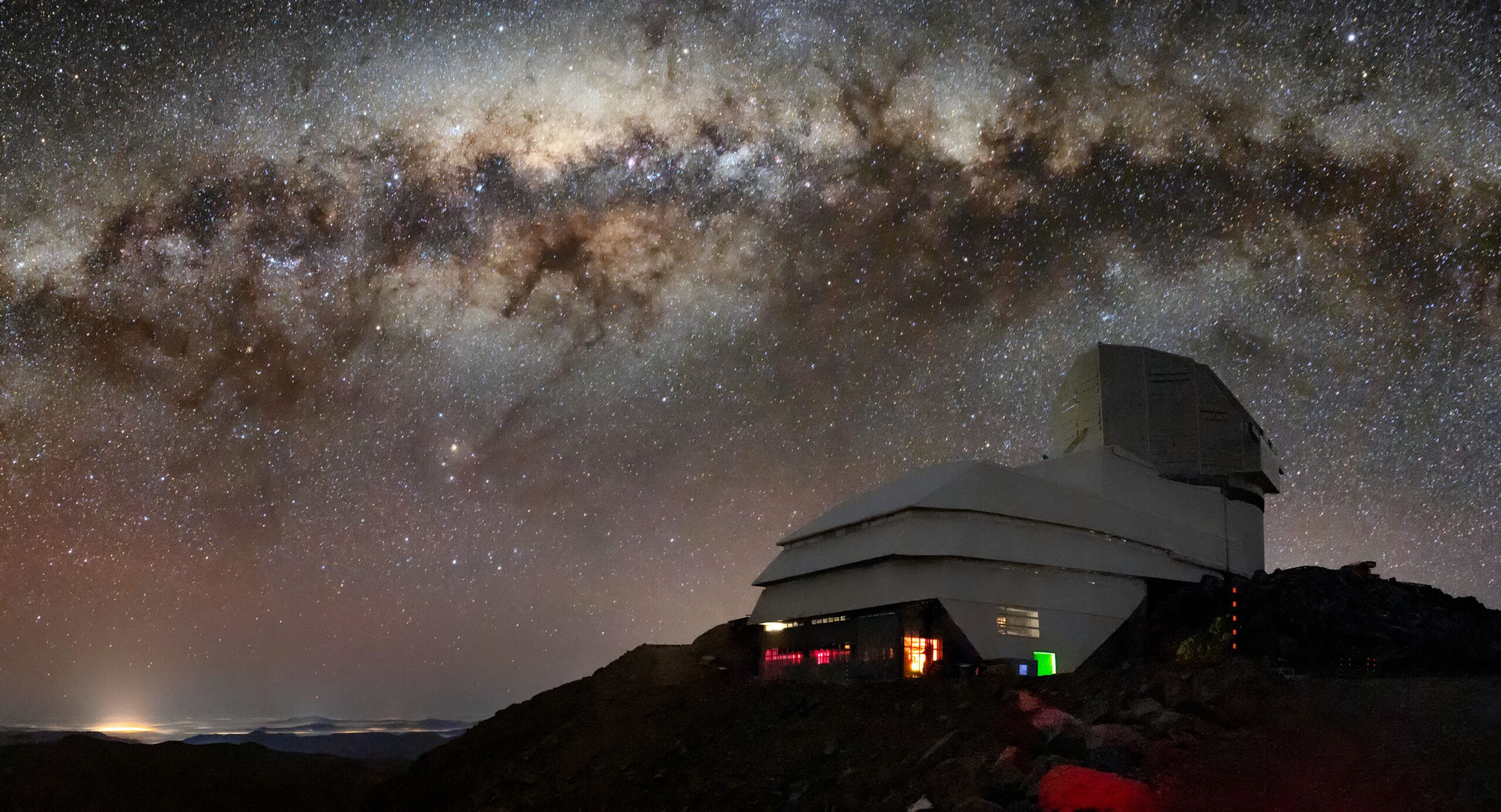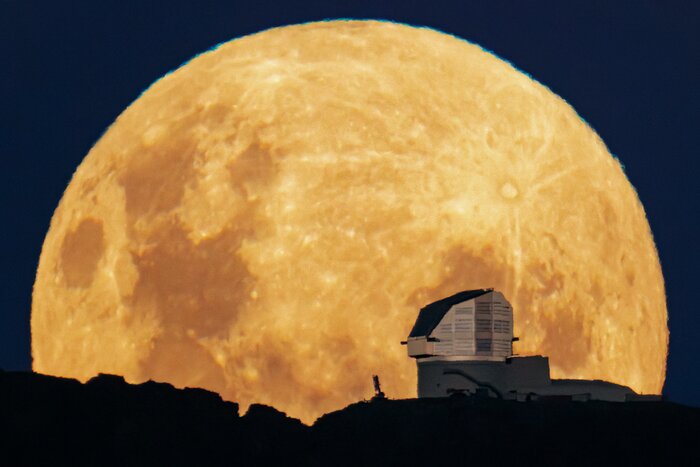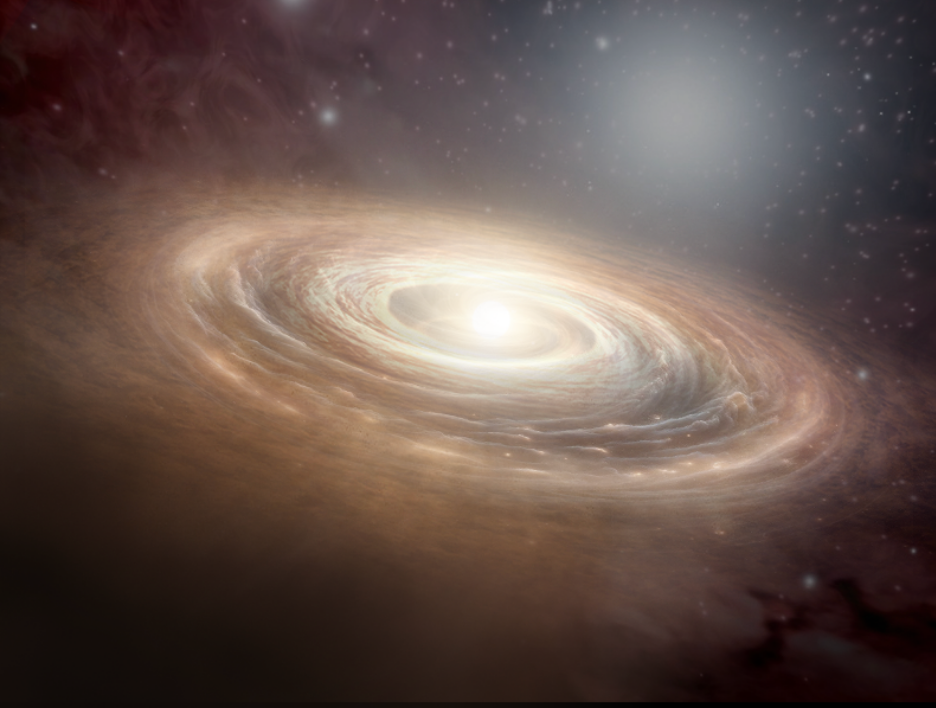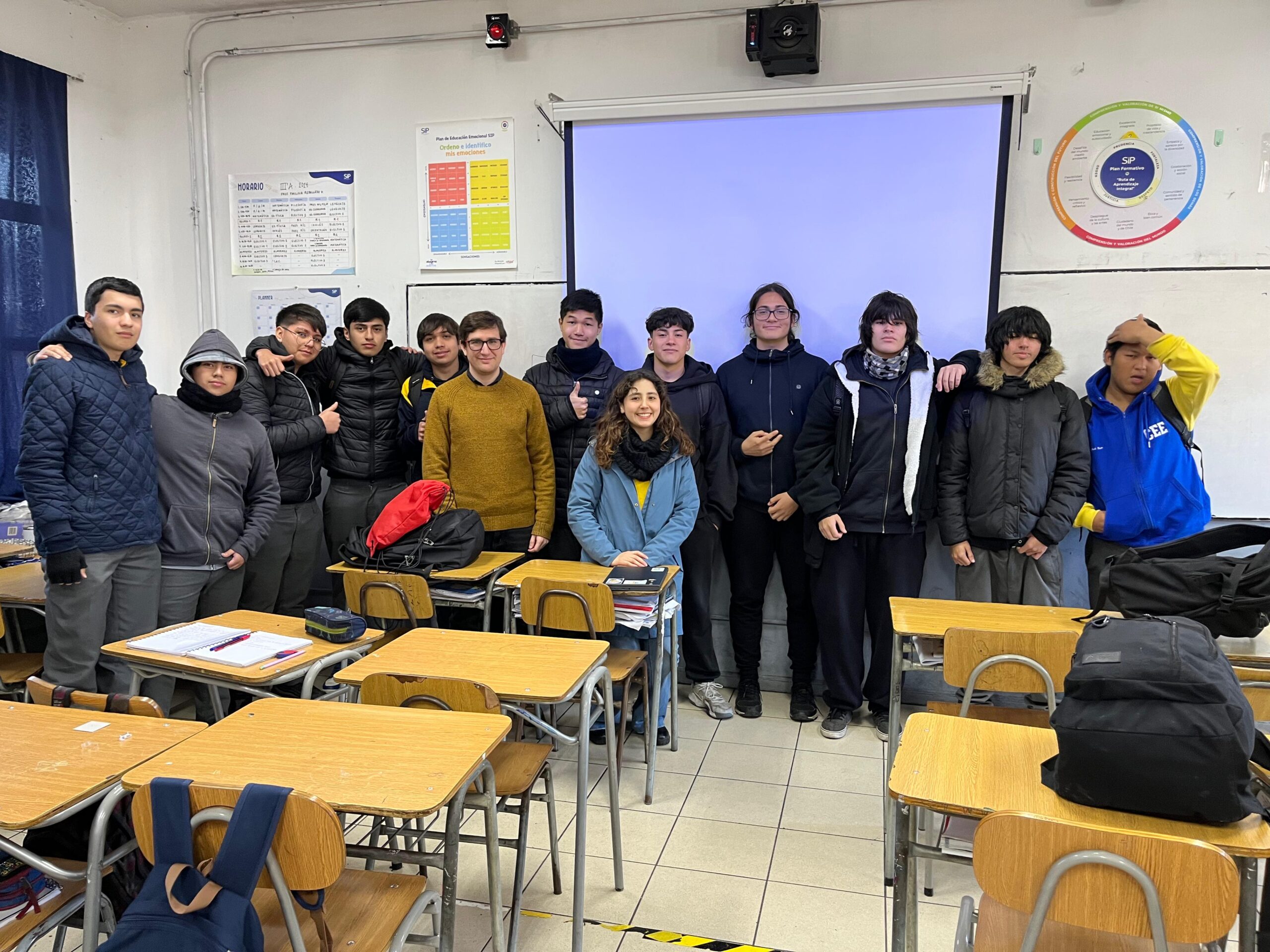
UC-CATA astronomers install new Chilean instrument at La Silla Observatory
PUCHEROS, the spectrograph developed entirely at the Astro Engineering Center of the Catholic University, recently captured its first light, marking the beginning of its observations from the north of Chile. The mission? To help in the search for exoplanets.
The PUCHEROS spectrograph began to be developed in 2009 at the Astro Engineering Center of the Catholic University (AIUC), as part of a Fondecyt project led by the astronomer of the UC Astrophysics Institute and researcher of the CATA Astrophysics Center, Leonardo Vanzi. The goal was to take advantage of the large observatory facilities in northern Chile to promote the development of astronomical instrumentation developed entirely in our country.
PUCHEROS was installed at the Santa Martina Observatory of the UC Astrophysics Institute, where it began to operate mainly for academic purposes, and was also able to make findings published in international scientific journals, including its collaboration to discover that the yellow hypergiant star HR 5711, in the constellation of Centaurus at about 12 thousand light years, was actually a binary system.
Now, this pioneering instrument has had a major upgrade, and an improved version was installed on the 1.5 meter ESO Telescope, located in La Silla, Coquimbo Region, one of the first installed by the European Southern Observatory in Chile. Its development had already given way to another important achievement of national astro-engineering, when in 2016 the FIDEOS spectrograph was installed, also at La Silla, the first Chilean instrument installed in an international observatory.
The astronomer explains that PUCHEROS was the first instrument developed at AIUC, which represented a great challenge. “The challenge at that time was to achieve something starting from scratch, an objective that we more than accomplished. A couple of years ago we had the opportunity to build an improved version of the instrument and install it at La Silla, and in this way we transformed that first version of the instrument into PUCHEROS+, much more sophisticated, which we developed thanks to all the experience accumulated in these years”, says Professor Leonardo Vanzi.
The new spectrograph was financed by the National Agency for Research and Development (ANID) through the Quimal fund for the development of astronomical instrumentation and Fondecyt, while the development of the software was in charge of the Chilean company BlueShadow, with long experience in the development of software for astronomy and the internet of things.
Regarding the scientific objectives of PUCHEROS+, the spectrograph is part of the preliminary stage for the implementation of an even more ambitious instrument, called PLATOSpec, an instrument that will track exoplanet candidates discovered by the PLATO mission of the European Space Agency (ESA), an initiative that will study the brightest stars to find transiting planets. Given its sensitivity and mode of operation, the instrument will help in the detection of planets analogous to Earth in terms of mass and orbit, in other solar systems.
Leonardo Vanzi emphasizes that the new spectrograph is the result of a work in which students – of astronomy and engineering – participated during the whole process, until the installation a couple of weeks ago at La Silla Observatory. “All the work we had done was more simulation or laboratory work, without having experience with a real system. As a student, one is usually used to having all the solutions at hand, but when you start to have more experience in the field, you realize that everything can fail and you learn to be prepared for anything”, says Rafael Ormazabal, UC engineering student, who worked on the instrument’s temperature controller: “from the purchase of components, to the design and implementation in the spectrograph”.
Luca Antonucci, a Master’s student in Engineering Sciences, emphasizes that “when you develop a real project, you are faced with the responsibility of making it work well and robustly over time, which means that from the simplest to the most complex tasks have to be carried out well, which implies much more work than one can imagine from the perspective of a university student”. His work -he adds- was focused on the telescope-spectrograph interface, which consists of 3 parts: calibration system, acquisition system and the injection of light into the fiber (which carries the light from the stars to the spectrograph).
Professor Vanzi highlights the value of this project as a technology transfer for Chile. In addition to PLATOSpec, the UC Astro Engineering Center is working on the construction of the TARdYS spectrograph for the Japanese telescope TAO, situated at an altitude of 5,600 meters on Cerro Chajnantor. “We continue on our path to position the country not only as a host of large telescopes, but also as an active partner with the capacity to contribute human capital, technology and resources,” he concludes.
Recent news
-
 Publicado el: 26/06/2025Vera C. Rubin: the telescope that watches the sky and anticipates the future of astronomy
Publicado el: 26/06/2025Vera C. Rubin: the telescope that watches the sky and anticipates the future of astronomy -
 Publicado el: 25/06/2025Study by young Chilean astronomer reveals new key parameter for understanding star formation
Publicado el: 25/06/2025Study by young Chilean astronomer reveals new key parameter for understanding star formation -
 Publicado el: 19/06/2025Rubin: The Universe’s First “Movie” That Will Transform Astronomy
Publicado el: 19/06/2025Rubin: The Universe’s First “Movie” That Will Transform Astronomy -
 Publicado el: 17/06/2025CATA Principal Investigator participates in international study revealing how planetary birth disks evolve
Publicado el: 17/06/2025CATA Principal Investigator participates in international study revealing how planetary birth disks evolve -
 Publicado el: 13/06/2025Students from Colegio Presidente Alessandri participated in CATA’s black hole talk
Publicado el: 13/06/2025Students from Colegio Presidente Alessandri participated in CATA’s black hole talk
Categories list
- Acknowledgments 17
- Astrobiology 5
- AstroCluster 1
- Black holes 13
- Corporativo 48
- Cosmology 4
- Descubrimientos 19
- Disclosure 45
- Exoplanets 13
- Extension 4
- Galaxies 17
- Galaxies formation 2
- Inter y Transdisciplina 2
- Local Universe 13
- Publications 5
- Sin categorizar 31
- Solar System 11
- Stellar formation 6
- Technology 8
- Technology Transfer 11


